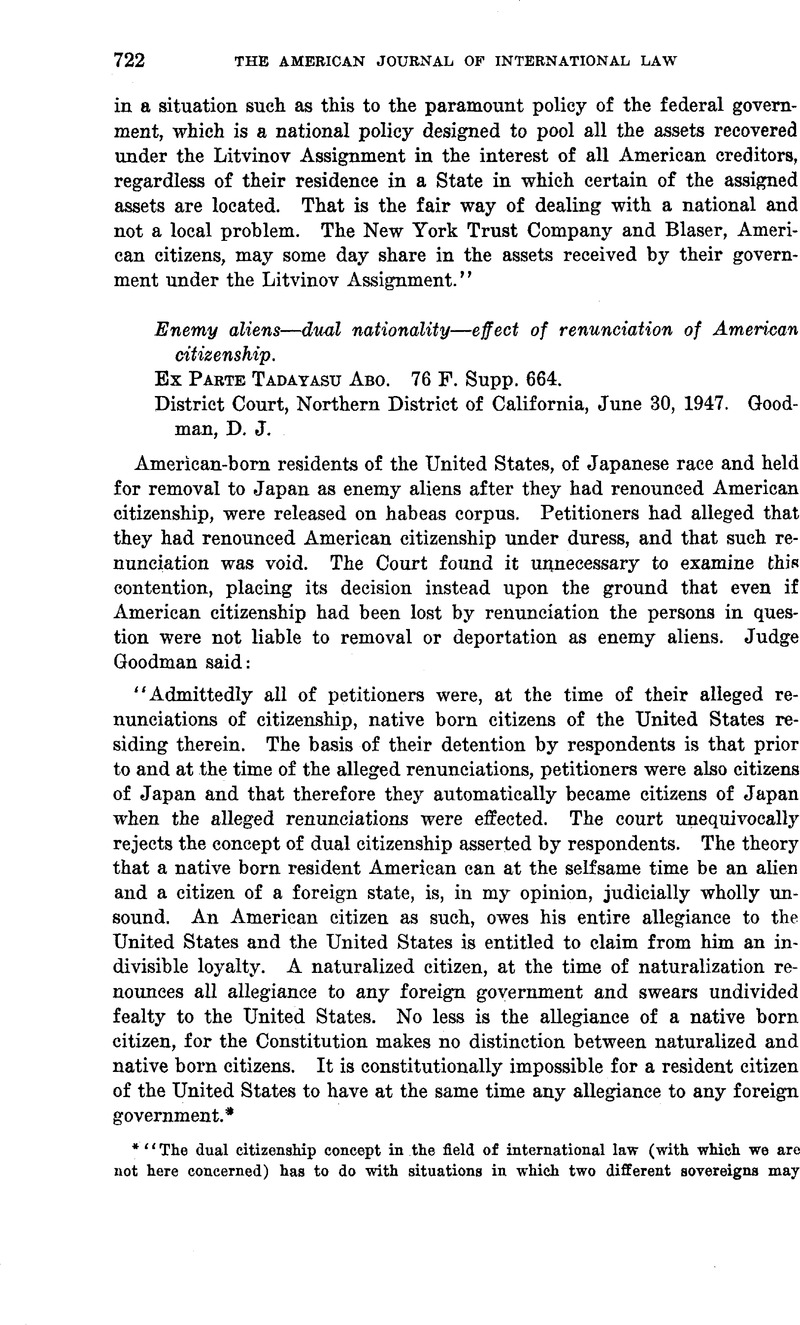No CrossRef data available.
Published online by Cambridge University Press: 20 April 2017

* “The dual citizenship concept in the field of international law (with which we are not here concerned) has to do with situations in which two different sovereigns may lawfully, within their respective territorial confines, claim citizenship of the same person, and he of them, and the international incidents and implications which result. Talbot v. Jansen, 3 Dall. 133, 164 . . .; Perkins v. Elg, 307 U. S. 325. . . . But that such a person may occupy a dual citizenship status, in the sense that he possesses simultaneously the citizenship of the sovereign state in which he is a domiciled native and that of a foreign sovereign as well, with all the attendant rights and obligations of both, is a principle to which no government would willingly subscribe” [footnote by Judge Goodman].